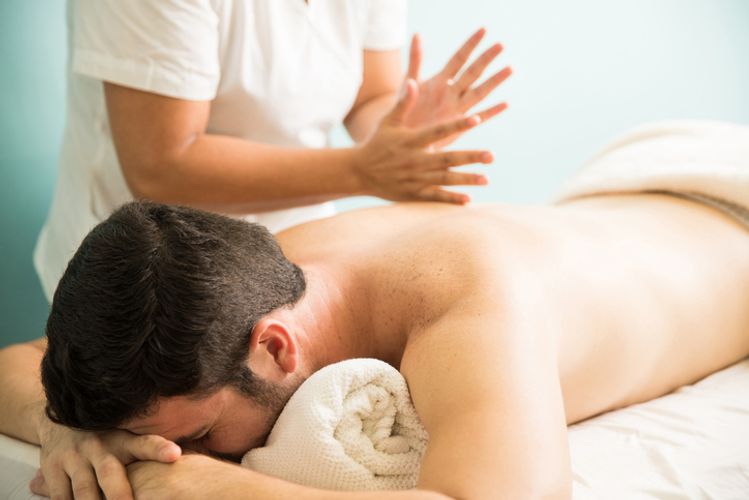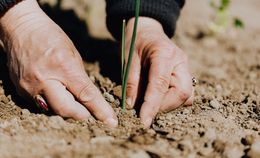Even if the phrase "Swedish massage" sounds exotic to you, chances are you're already familiar with some of its techniques. That's because Swedish massage is the most common form of massage therapy practiced throughout the United States.
Any well-trained, licensed professional massage therapist you might see will be familiar with Swedish massage techniques. Some of the most common images you have about massage therapy likely come from this modality as well - such as long, soothing, gliding strokes and rhythmic kneading of the body's soft tissues.
However, there is much more to Swedish massage than just these basic concepts. This guide will give you a thorough introduction to Swedish massage therapy, including:
- The essential elements and traditional structure of a Swedish massage therapy session
- How Swedish massage compares to other massage modalities
- The benefits of Swedish massage
Swedish massage practice is widespread for good reason. Nearly everyone can benefit from this type of massage therapy and most clients find Swedish massages highly relaxing and enjoyable. Read on to learn more about this popular type of massage therapy.
The elements of a Swedish massage session
A traditional Swedish massage therapy session involves a set progression of different kinds of massage strokes, and delivered with the aid of lotion or oil.
The five strokes of Swedish massage include the following:
- Effleurage
- Petrissage
- Friction
- Vibration
- Tapotement
Effleurage is a French word meaning "to skim" or "to lightly touch". In a Swedish massage session, your massage therapist will use effleurage to apply oil or lotion and warm up your body. This helps prepare your muscles and connective tissue so that they can accept deeper pressure and more vigorous touch comfortably during the rest of the session.
Effleurage involves long strokes in gliding or circular motions using the fingers and open palms. Effleurage strokes may be applied with pressure ranging from very light to firm, but moderate pressure is most frequently used.1 Effleurage is also used at the end of a Swedish massage session to soothe and relax the body2 and to help transition the client out of the massage experience.
Petrissage is the next step in a Swedish massage. The term comes from the French word meaning "to knead". Petrissage is characterized by rhythmic compression of the body's soft tissues, through a variety of motions including kneading, rolling, lifting, wringing, and squeezing.3
Petrissage takes up most of a Swedish-style massage session and helps in achieving many of the therapeutic benefits of Swedish massage. Petrissage helps stretch and loosen soft tissues to release muscle tension, increase flexibility, and alleviate pain.
Friction is the third technique in Swedish massage. Friction is most commonly applied using a rubbing motion in specific areas with the fingers, in a circular motion or perpendicular to the muscle fibers. Friction helps create heat to relax tense knots of muscle, break up scar tissue, and treat particular problematic locations such as joints.4
Vibration involves vigorously shaking parts of the body to loosen and relax the tissues in that area. This technique can aid in breaking up scar tissue as well as stimulating blood circulation.
Tapotement is the fifth essential element of a Swedish massage. Tapotement is a French word meaning "to tap". Tapotement includes percussive techniques applied rapidly using the side of the hands, fingers, open palms, closed fists, and/or cupped hands.5
In massages aimed at relaxation, this step is sometimes omitted. But many people enjoy the effects of tapotement. These vigorous strokes are very effective at increasing local blood circulation and stimulating nerve endings to improve muscle tone.
Swedish massage vs. other types of massage
Swedish massage is best known and most often used for relaxation. The rhythmic movements that tend to gradually increase in intensity are soothing for many people. Swedish massage often has therapeutic effects as well (more on that in the next section).
However, other massage modalities developed later - such as trigger point therapy and myofascial release - specifically target certain ailments and have therapeutic impacts as their primary goal. These techniques have become popular for people seeking specific therapeutic benefits from massage; they can feel more intense and even uncomfortable for some people during their application, however, so they are less often used for relaxation.
Swedish massage is considered a great massage for those new to massage therapy or those seeking primarily a pleasurable or relaxing experience from their session, since the sensations of Swedish massage are nearly universally enjoyed.
Swedish massage is also a wonderful way to gain the overall physical and psychological benefits of massage therapy - reduced muscle tension, relief from stiffness and sore muscles, and stress reduction.
Benefits of Swedish massage
Swedish massage is known as a particularly pleasant-feeling and relaxing form of massage therapy. This casual language is really an understatement of the well-documented benefits of massage for mental health and well-being!
Massage therapy, including Swedish massage, has been shown to:
- Reduce symptoms of anxiety, depression67 and PTSD8
- Improve mood and sleep910
- Help improve psychological well-being of people going through stressful life events, such as cancer treatment,11 treatment for HIV,12 hospice care,13 or surgery recovery14
Swedish massage has also been shown to produce all of the other beneficial health and wellness impacts of massage therapy in general, including the following:
- Aids in pain management for a variety of conditions, including low-back pain, fibromyalgia, arthritis, and more15 without the risks of more invasive treatments such as medication or surgery
- Supports cardiovascular health by lowering blood pressure and stress levels16
- Supports exercise performance and recovery17
- Helps reduce severity and incidence of migraines18 and tension headaches19
- Supports healthy digestion2021
The Bottom Line
Swedish massage is a wonderful, accessible way to gain all of the benefits and pleasures most people associate with massage therapy generally.
Swedish massage is especially recommended for anyone seeking massage primarily for relaxation and pleasure, clients new to massage, and anyone desiring an effective all-purpose massage experience with many of the therapeutic benefits of massage therapy generally.
References:
1 "Swedish Massage Techniques": https://www.amcollege.edu/blog/5-techniques-of-swedish-massage-amc-miami
2 "Massage Therapy Styles and Health Benefits": https://www.webmd.com/balance/guide/massage-therapy-styles-and-health-benefits
3 "Massage Therapy Styles and Health Benefits": https://www.webmd.com/balance/guide/massage-therapy-styles-and-health-benefits
4 "Swedish Massage Techniques": https://www.amcollege.edu/blog/5-techniques-of-swedish-massage-amc-miami
5 "Massage Stroke Review Part 3: Tapotement": https://www.integrativehealthcare.org/mt/tapotement-massage-stroke/
6 "Massage + Depression": https://www.amtamassage.org/articles/3/MTJ/detail/2942/massage-depression
7 "Massage Therapy for Mental Health": https://www.amtamassage.org/resources/massage-and-health/mental-health/
8 "In Safe Hands: Massage & PTSD": https://www.amtamassage.org/articles/3/MTJ/detail/3484/in-safe-hands-massage-ptsd
9 "Research Literacy: Massage and Sleep": https://www.amtamassage.org/publications/massage-therapy-journal/research-massage-sleep/
10 "Massage therapy for a better night's sleep": http://www.sleepreviewmag.com/2014/05/massage-therapy-sleep/
11 "Massage Therapy for Cancer Patients": https://www.amtamassage.org/resources/massage-and-health/medical-treatments/massage-for-cancer-patients/
12 "Open-label, randomized, parallel-group controlled clinical trial of massage for treatment of depression in HIV-infected subjects": https://www.ncbi.nlm.nih.gov/pubmed/23098696
13 "Massage + Hospice":https://www.amtamassage.org/articles/3/MTJ/detail/2636/massage-hospice
14 "Massage for Rehabilitation": https://www.amtamassage.org/resources/massage-and-health/rehabilitation/
15 "Massage as an Alternative for Opioids": https://www.amtamassage.org/resources/massage-and-health/alternative-to-opioids/
16 "Cardiovascular Health and Massage Therapy": https://my.amtamassage.org/courses/detail/79/cardiovascular-health-and-massage-therapy
17 "Massage Therapy for Those Who Exercise": https://www.amtamassage.org/about/position-statements/massage-therapy-for-those-who-exercise/
18 "Tackling Migraines Head-On": https://www.amtamassage.org/articles/3/MTJ/detail/3704/tackling-migraines-head-on
19 "Massage Can Be Effective for Tension Headaches": https://www.amtamassage.org/about/position-statements/massage-effective-for-tension-headaches/
20 "Why You Should Massage Your Stomach and How to Do It": https://www.healthline.com/health/stomach-massage#takeaway
21 "Does Abdominal Massage Relieve Constipation?": https://www.nursingtimes.net/clinical-archive/continence/does-abdominal-massage-relieve-constipation/5027718.article














